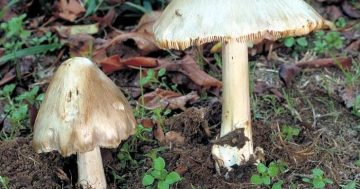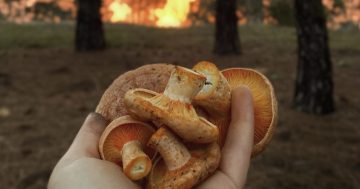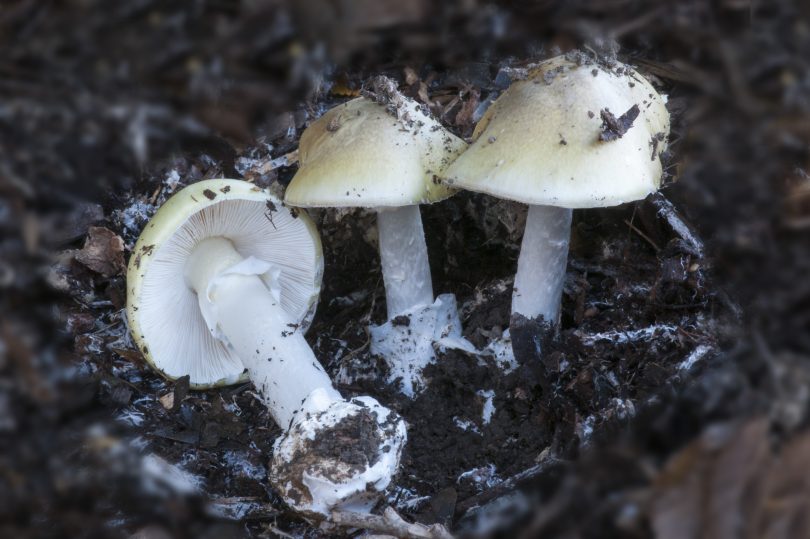
Death cap mushrooms (Amanita phalloides). Photo: Alison Pouliot.
The garden might look lovely and the lawn green after all this rain, but something else may be pushing up through the leaf litter. Something that’s potentially lethal.
Mushrooms love water. Throw in some rotting autumn leaves and Canberra is a perfect storm at the moment.
Professor Celeste Linde studies mycology and specifically the effect of fungi on plants at the ANU Research School of Biology. She’s certain there’s a rise in the number of mushrooms.
“Mushrooms won’t appear if it’s dry,” she says.
“Most of the mushroom you see above the ground is made up of water – about 80 per cent of the weight of the fruiting body is water. If there’s no water in the soil, you won’t have a mushroom.”
Changed weather patterns over the Pacific Ocean due to a La Nina has hit Canberra and the whole south-east of Australia with higher levels of rain than average over the past two years.
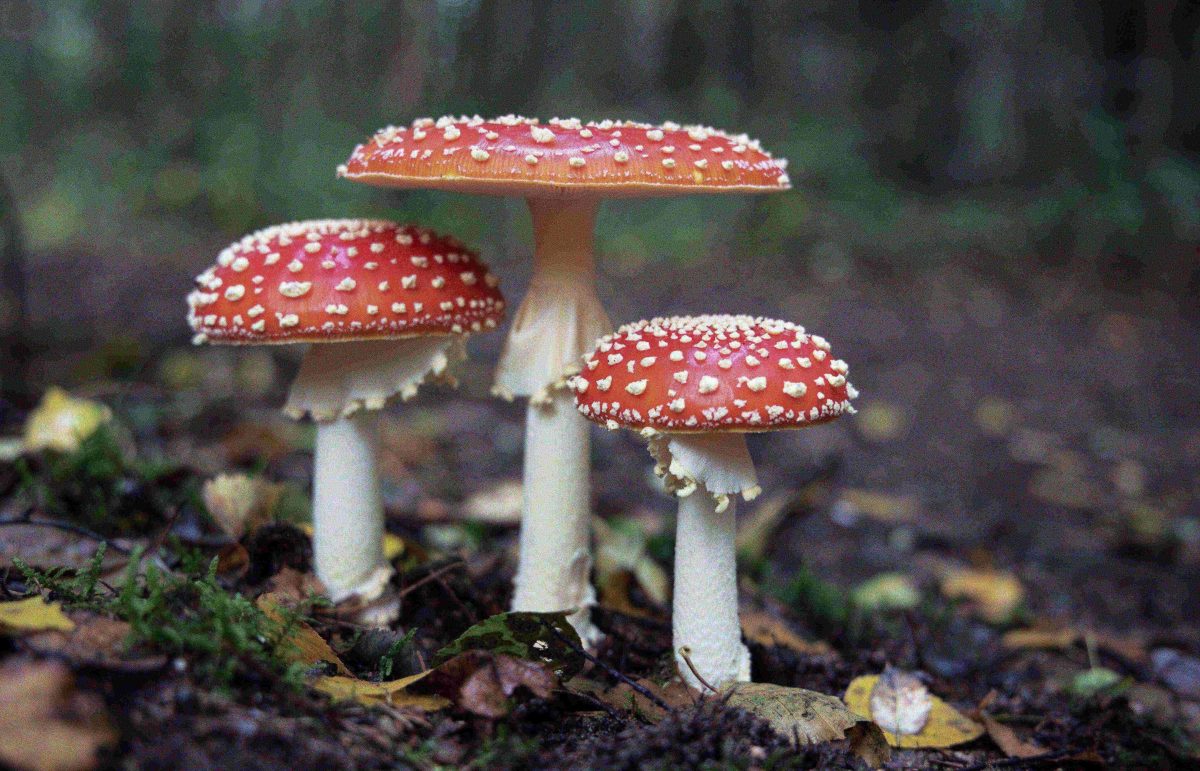
Red-spotted mushroom. Photo: Hans Veth
As a form of fungi, mushrooms start out in life as microscopic spores. With plenty of water in the soil, more of these spores find a comfortable home. A fruiting body then pops up in a matter of days.
For mushrooms under trees or around plants, there’s often a mutually beneficial relationship taking place. The mushroom exchanges nutrients for carbon, sugars and water.
Other types such as bracket fungi, which forms on tree limbs, are more hardy and less reliant on water.
“The ones that look like a shelf growing out of a tree trunk have much less water in their fruiting body,” Celeste says.
“They get most of their water from the tree itself.”
It’s impossible to put a finger on what variety is most common to Canberra.
“It really depends where you are, and what trees are around.”
But there’s a simple answer to the most dangerous variety, and it’s in the name: the death cap (Amanita phalloides).
It’s estimated that as little as half a death cap contains enough toxin to kill an adult human. Over the years, it’s the culprit behind most cases of mushroom poisoning.
No matter the variety, mushrooms aren’t toxic unless eaten.
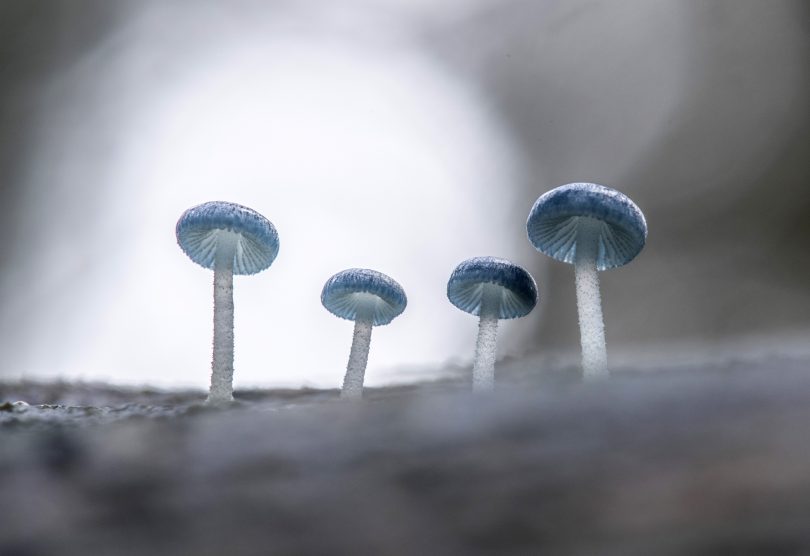
Up to 80 per cent of the body of a mushroom is made of water. Photo: Alison Pouliot.
The general rule of thumb is not to eat a mushroom unless it’s from a grocery store.
But many people are concerned for their pets.
“There is some anecdotal evidence that some mushrooms are poisonous to dogs,” Celeste says. “But we don’t really know which ones, because it’s not the same ones as are poisonous to us.”
She says dogs in Canberra are most prone to eating puff balls along footpaths, but without any effect.
“If your dog experiences some sort of symptom after eating a mushroom, take it to a vet.”
Fungi inside the home can be more insidious. Black mould commonly forms around windows or on walls, especially during winter when it might be a struggle to keep these areas dry.
Celeste says there are quite a few respiratory issues associated with mould in the house.
“People develop asthma-type problems if there are mould spores flying around.”
A constant drip-feeding of water, such as a leaking shower, can lead to actual mushrooms sprouting inside too. These aren’t any more dangerous than mushrooms outside, but can damage the home’s structure and should be removed as soon as they come up.
A mixture of two parts vinegar and one part water will kill most mould, while more serious cases might require diluted bleach. Be sure to wear gloves and a mask when disturbing mould and using bleach.
Diluted vinegar or baking soda will also work outside for mushrooms.
“People think they can just kick them over,” Celeste says.
“All that does is spread the spores. The roots are also still in the soil, so you’re not really doing anything.”
More information on death cap mushrooms is available from ACT Health. If you think you’ve seen a death cap mushroom in Canberra, report it to Access Canberra on 132 281.












